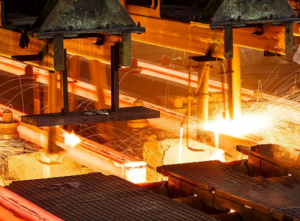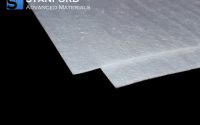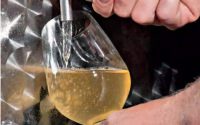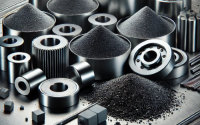How Are Special Refractories Used in Steel Making?
What Are Special Refractories?
Special refractories are advanced materials designed to withstand extremely high temperatures, chemical corrosion, and mechanical wear, making them suitable for use in harsh industrial environments. They include carbon (graphite, carbon-carbon composites), oxide (alumina, zirconia), non-oxide (silicon carbide, boron nitride), and composite (reinforced composites) types.

These materials are distinguished from conventional refractories by their superior properties and performance in specialized applications.
- Special refractories exhibit high thermal stability, maintaining structural integrity and performance at temperatures often exceeding 1500°C.
- They offer excellent chemical resistance to slag, molten metals, and gases, preventing degradation and contamination.
- With high compressive strength and abrasion resistance, they are durable under mechanical stress. These materials can withstand rapid temperature changes without cracking or spalling, demonstrating strong thermal shock resistance.
- Additionally, some special refractories have low thermal conductivity, providing effective thermal insulation.
What Are the Applications of Special Refractories?
Special refractories have various applications across multiple industries.
- In steelmaking, they are used for lining blast furnaces, basic oxygen furnaces, electric arc furnaces, and ladles, as well as for components like taphole clays, tuyeres, slide gates, and submerged entry nozzles.
- In glass manufacturing, they are utilized for furnace linings, forehearths, and regenerator chambers to withstand high temperatures and corrosive glass melts.
- For cement and lime kilns, special refractories are essential for kiln linings and cooler zones due to their high thermal resistance and durability.
- In ceramics and kiln furniture, they are used to create supports, shelves, and setters for supporting ceramics during firing.
- In the petrochemical industry, these materials line catalytic cracking units, gasifiers, and reactors, which face high temperatures and corrosive environments.
- In power generation, special refractories are employed for boiler linings, gasifier linings, and insulation materials to handle high temperatures and thermal cycling.
Related reading: What Are The Special Refractories Widely Used In Modern Industry?
How Are Special Refractories Used in Steel Making?
Special refractories play a crucial role in steelmaking due to their ability to withstand high temperatures and harsh conditions. Here are the key applications of special refractories in steelmaking:
1. Blast Furnace
– Refractory Lining: Special refractories such as high-alumina bricks and silicon carbide are used to line the blast furnace to withstand the high temperatures and corrosive slag.
– Taphole Clay: Used to plug the tap hole and resist the erosive action of molten iron and slag.
2. Basic Oxygen Furnace (BOF)
– Lining: Magnesia-carbon bricks and dolomite refractories are commonly used for their high resistance to thermal shock and chemical attack.
– Tuyeres: Special refractories protect the tuyeres, the nozzles through which oxygen is blown into the furnace.
3. Electric Arc Furnace (EAF)
– Lining: Magnesia-carbon and alumina-magnesia-carbon bricks are used to line the furnace for their ability to withstand high temperatures and corrosive slag.
– Roof and Sidewalls: High-performance refractories protect the furnace roof and sidewalls from the intense heat and chemical reactions.
4. Ladle Furnace
– Ladle Lining: Refractories like high-alumina, magnesia-carbon, and dolomite bricks are used to line the ladles to handle molten steel and maintain its temperature.
– Slide Gates and Nozzles: Special refractories ensure the controlled flow of molten steel during casting.
5. Tundish
– Lining: Refractories such as high-alumina and silica-based materials are used to line the tundish, which holds and directs the flow of molten steel to the continuous casting mold.
– Impact Pads and Flow Control Devices: These refractory components help manage the flow and reduce turbulence in the tundish.
6. Continuous Casting
– Molds: Copper molds are lined with special refractories to protect against thermal shock and abrasion.
– Submerged Entry Nozzles (SENs): Made from high-performance refractories to protect against thermal shock and chemical erosion.
7. Secondary Steelmaking
– Vacuum Degassers: Refractory linings in vacuum degassing units handle the extreme conditions during the removal of dissolved gases from molten steel.
– Ladle Refining: Special refractories are used in ladles during processes like ladle metallurgy and argon oxygen decarburization (AOD).
8. Iron and Steel Foundries
– Cupola Furnaces: Refractory linings in cupola furnaces are made from high-alumina and silicon carbide materials to withstand high temperatures and slag erosion.
– Induction Furnaces: Special refractories with high thermal shock resistance and wear resistance are used to line induction furnaces.
Conclusion
Special refractories are essential for the efficient and reliable operation of steelmaking processes, providing high thermal stability, chemical resistance, mechanical strength, and thermal shock resistance. These advanced materials play a critical role in maintaining the integrity of furnaces, ladles, and other components exposed to extreme conditions, ensuring high-quality steel production and extending the lifespan of industrial equipment. Their diverse applications across multiple industries highlight their importance in modern industrial operations, contributing to improved performance, reduced maintenance costs, and enhanced product quality. For more details, please check Advanced Refractory Metals (ARM).



